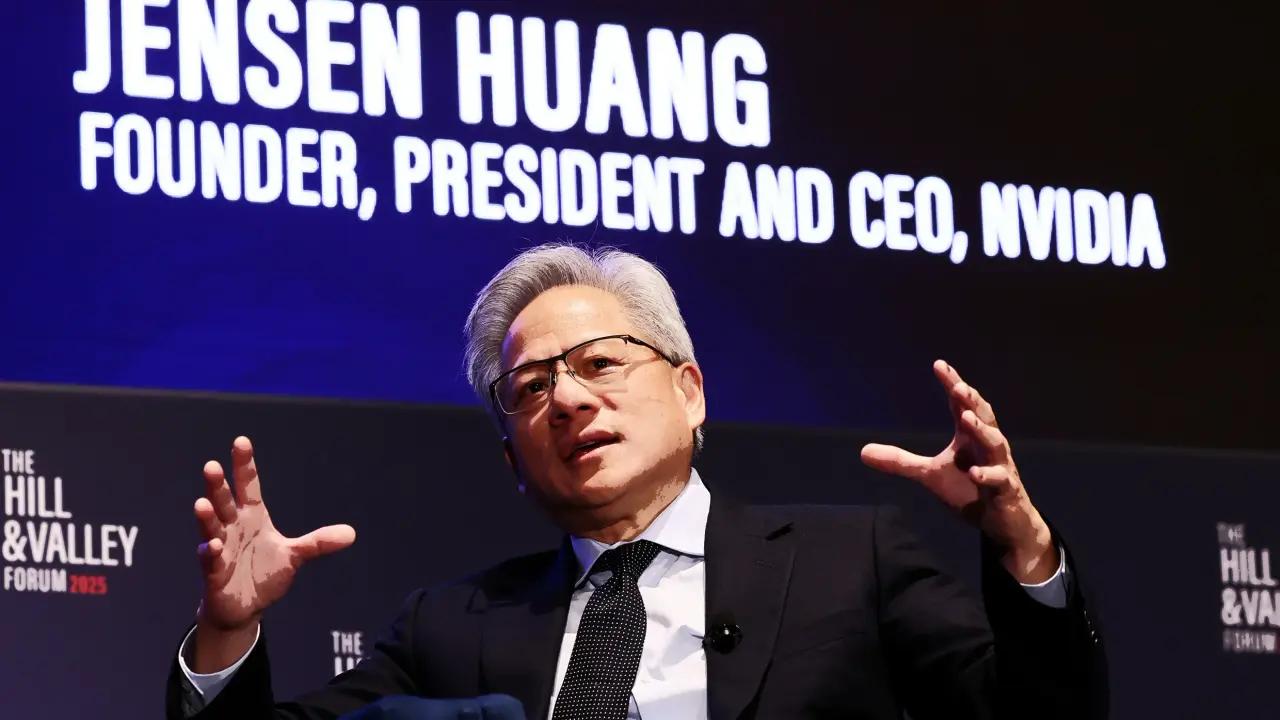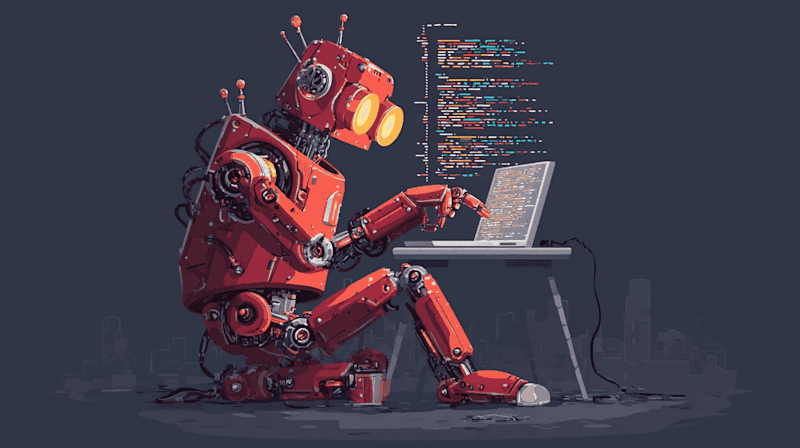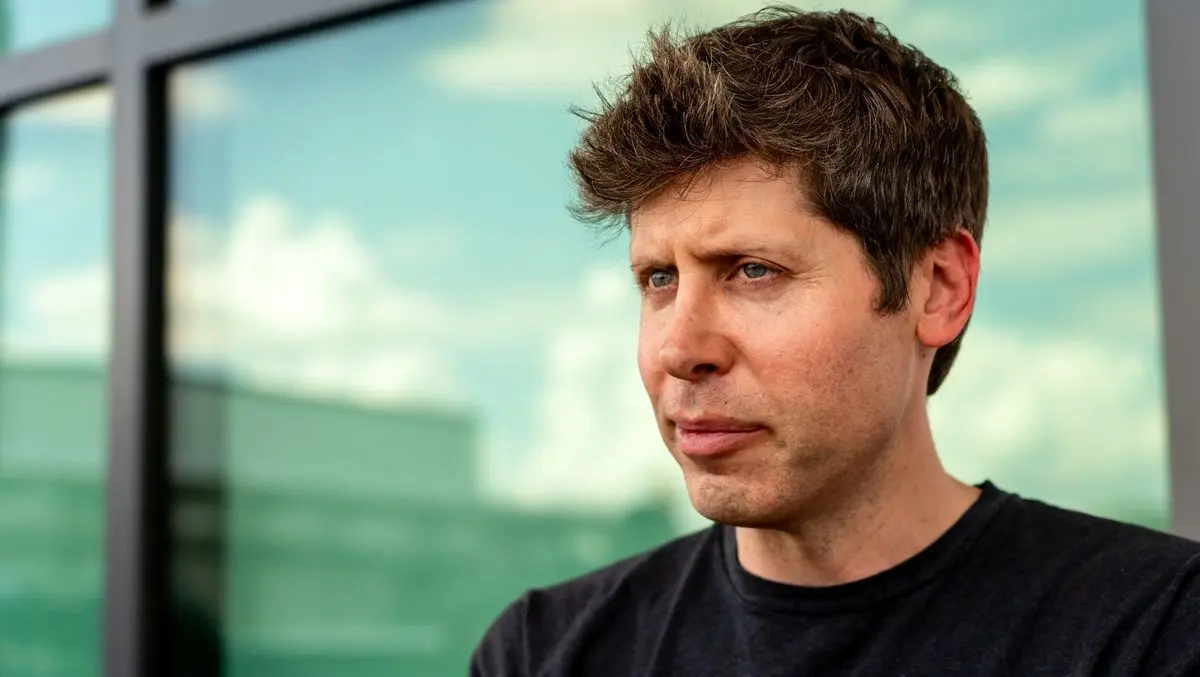Nvidia's Spatial AI and Omniverse: Bridging the Digital and Physical Worlds
2 Sources
2 Sources
[1]
For Nvidia, spatial AI and the 'omniverse' entering physical world may be the next big thing
An employee demonstrates a Nvidia Cop. Omniverse, Issac, and Metropolis powered by AI robots on display in Taipei, Taiwan, on Wednesday, June 5, 2024. While ChatGPT created a new way to use our devices, technology is more than just what we see on our screens. Research in the realm of spatial artificial intelligence and robotics is developing as we speak, and it's bringing the technological focus back into the physical world. "When we're talking about AI, people are mostly talking about chatbots and generating images," said Rev Lebaredian, vice president of omniverse and simulation technology at Nvidia. "All of it is very important, but the things we take for granted around us in the physical world are actually far more important." With Nvidia's Omniverse platform, Lebaredian spends his days building physically accurate worlds in the digital space, otherwise known as digital twins. "Creating robot brains is not going to be possible unless we can first take the world around us and represent it inside a computer, such that we can train these robot brains in the place where they're born, which is inside a computer," he said. Spatial AI allows models to understand and interact with the physical world in ways previously limited to human cognition, and Nvidia is not the only one building on it. Stanford researcher and professor Fei-Fei Li recently brought her company World Labs out of stealth mode. It's a spatial intelligence company building "large world models" to understand, interact with, and build on the three-dimensional world around us. Backed by Andreessen Horowitz, World Labs posits that initial use cases are geared toward professional artists, designers, developers and engineers. Some of the other startups taking AI in the physical realm seriously include Mytra, a warehouse automation solution that uses artificial intelligence and robotics to move materials; Auki Labs, which is building a decentralized physical infrastructure network "that machines and AI can use to collaboratively understand the physical world"; and OpenSpace, which uses reality capture and AI-powered analytics for construction that helped coordinate updates to the National World War II Museum in New Orleans. For its part, Nvidia is working to bring the 3D world into computing for simulation purposes, and then bring that computing back out into the real world. Digital twins of spaces -- and synthetic data about what can happen in those spaces -- help simulate use cases like autonomous driving, visual assistance and warehouse robots. In contemplating the ultimate use of artificial intelligence, Nvidia concluded that robotics is the answer. More than a decade ago, the advancement of deep learning and convolutional neural networks unlocked the possibility of creating an intelligence that can perceive, make decisions about, and act upon the physical world. Robots, Lebaredian says, can help us in myriad ways, from manufacturing to transportation. And despite Nvidia CEO Jensen Huang taking the stage with a crew of humanoid robots earlier this year, robots are more than that. "Even the spaces that we inhabit can be robots themselves, like the building I'm in right now," Lebaredian said from his post in San Francisco. "It can understand where people are, how to configure the climate and optimize energy usage." But human-shaped robots do have a place, and not just because of the lasting impact of legends like C-3PO from "Star Wars" or, more recently, the robotic namesake of Apple TV's "Sunny." Rather, it's because the world around us is designed to accommodate our human form. To seamlessly incorporate robots into a factory or other setting designed for people, creating a robot that can jump right in with its two arms and mobile base often just makes sense. "Every single object that we design is designed for our inefficiencies," said Agustin Huerta, senior vice president of digital innovation for North America at Globant, pointing to his reusable water bottle. Globant is a Nvidia partner focused on AI, robotics and quantum computing, among other innovative specialties. "Creating robots that are as inefficient as us is challenging, but also it's needed because you want them to get embedded into that environment as soon as possible and interact alongside a human being," he added. Many companies that focus on robotics and spatial intelligence are homing in on the world of manufacturing. "It's not as sexy and interesting to talk about as a lot of the other things that we can apply AI to," said Lebaredian. "People don't usually think about how stuff is made, but that's actually where most of mankind spends their energy and time." This evolution, which Lebaredian believes is coming in a matter of years versus decades, will transform the appearance of factory floors. But as robots continue to expand beyond warehouse grounds -- whether it's food delivery bots on college campuses like Franklin & Marshall College, Wayve self-driving cars in London or the team of robots at Incheon International Airport -- Globant's Huerta says more infrastructure will visually change to accommodate evolving physical technology. For example, he said, "I envision that we will see spaces in which doors will be twice the current size, because that will fit a robot moving around." He talks about trading stairs for ramps and elevators and automating door openings. It's worth pointing out that these are already talking points in architectural standards for accessible design, but the focus there is on people with disabilities, not robots. However, Huerta said, "In the end, you have entities with different abilities, human or synthetic, and the environment should be transformed according to that. Having buildings without elevators right now is shocking." That new technology -- in this case, deeply thinking robotics that use spatial AI to get ready for the real world -- will be "the most impactful and transformational technology the world has ever seen," Lebaredian said.
[2]
The next big AI revolution? Nvidia's Spatial AI and robots
Nvidia is going beyond chatbots and screen-based tools with spatial AI, making it a reality in the real world. From the heart of this push sits the company's Omniverse platform, through which AI models can engage with the physical world as much as humans can. Through what Nvidia calls "digital twins," these AI systems can simulate real-world spaces like factories, warehouses, and even city streets. Virtual versions of these environments are used to train AI models to do things like autonomous driving, guide visually impaired people, and automate actions in warehouses, all of which are run by Nvidia. For Nvidia, one of the hottest topics at its GPU Technology Conference is AI. "We're talking about chatbots and generating images," said Rev Lebaredian, vice president of Omniverse and simulation technology at Nvidia. "All of it is very important, but the things we take for granted around us in the physical world are far more important," he said in an interview. It's not just about virtual assistants; spatial AI is about building the physical world AI. According to a report by CNBC, Lebaredian described how Nvidia's technology can help create "robot brains" by first simulating the physical world in a computer environment, which then trains the AI for real-world tasks. If robots like these can be made, they could change everything from manufacturing to logistics to even home automation. Other companies, like Stanford's World Labs, also work with models interacting with the three-dimensional world around us. Nvidia's future is not limited to the hookup of humanoid robots ... it's the physical transformation of spaces to accommodate intelligent machines. 'Even the spaces we live in, they could be robots as well ... like the building I'm in actually, so the building -- the building could be cool, they could change the temperature of the building to economize the energy use, economy of the energy use, based on the fact that I'm here,' Lebaredian said. Companies like Nvidia partner Globant, which envision how physical environments could adapt to allow for robots like wider doors and ramps rather than stairs, are based on the CNBC report. In the next few years, it is expected to usher in a transition toward spatial AI that could completely transform the way industries work. Lebaredian believes that this technology will be "the most impactful and transformational technology the world has ever seen." AI is poised to reshape our world in robot-driven factories, smarter cities, and even smarter homes.
Share
Share
Copy Link
Nvidia is pioneering spatial AI and the Omniverse platform, aiming to bring AI into the physical world through digital twins, robotics, and intelligent spaces. This technology could revolutionize industries from manufacturing to urban planning.

Nvidia's Vision for Spatial AI and the Omniverse
Nvidia, a leader in AI and graphics processing technology, is pushing the boundaries of artificial intelligence beyond chatbots and screen-based applications. The company is focusing on spatial AI and the 'omniverse,' aiming to bring AI into the physical world in unprecedented ways
1
2
.The Omniverse Platform and Digital Twins
At the heart of Nvidia's initiative is the Omniverse platform, which allows for the creation of physically accurate digital representations of real-world environments, known as "digital twins." Rev Lebaredian, vice president of omniverse and simulation technology at Nvidia, explains that these digital twins are crucial for training "robot brains" in a computer environment before deploying them in the real world
1
.Applications of Spatial AI
Spatial AI has a wide range of potential applications:
- Autonomous driving
- Visual assistance for the visually impaired
- Warehouse automation
- Manufacturing optimization
- Intelligent buildings and energy management
Lebaredian emphasizes that while chatbots and image generation are important, the physical world applications of AI will have far-reaching impacts
1
2
.The Role of Robotics
Nvidia sees robotics as the ultimate application of artificial intelligence. The company is working on various forms of robots, including humanoid ones, which were showcased by CEO Jensen Huang earlier this year. However, Lebaredian points out that robots don't always need to be human-shaped; even buildings can function as robots, optimizing climate control and energy usage based on occupancy
1
.Industry Transformation
The integration of spatial AI and robotics is expected to transform various industries, particularly manufacturing. Lebaredian predicts that this evolution will occur within years rather than decades, significantly altering the appearance and functionality of factory floors
1
.Related Stories
Adapting the Physical World
As AI and robotics become more prevalent, the physical world may need to adapt. Agustin Huerta, senior vice president of digital innovation at Globant, an Nvidia partner, suggests that we might see changes in building design, such as wider doors and more ramps to accommodate robots
1
2
.Other Players in the Field
While Nvidia is at the forefront, other companies and startups are also making strides in spatial AI:
- World Labs: A Stanford-based company developing "large world models" for 3D world interaction
- Mytra: Focusing on warehouse automation using AI and robotics
- Auki Labs: Building a decentralized physical infrastructure network for AI
- OpenSpace: Utilizing AI for construction and renovation projects
1
The Future of Spatial AI
Lebaredian believes that spatial AI and the integration of AI into the physical world will be "the most impactful and transformational technology the world has ever seen." This technology is poised to reshape industries, create smarter cities, and even transform our homes in the coming years
2
.References
Summarized by
Navi
[1]
Related Stories
NVIDIA Unveils Cosmos Reason and Advanced AI Models for Robotics and Physical AI Applications
12 Aug 2025•Technology

Nvidia Unveils Cosmos: A Groundbreaking AI Platform for Physical World Interaction
07 Jan 2025•Technology

Nvidia Unveils AI Breakthroughs for Real-World Applications in Biotech, Robotics, and Autonomous Vehicles
06 May 2025•Technology

Recent Highlights
1
Google launches Gemini 3 Flash as default AI model, delivering speed with Pro-grade reasoning
Technology

2
OpenAI launches GPT Image 1.5 as AI image generator war with Google intensifies
Technology

3
OpenAI launches ChatGPT app store, opening doors for third-party developers to build AI-powered apps
Technology





